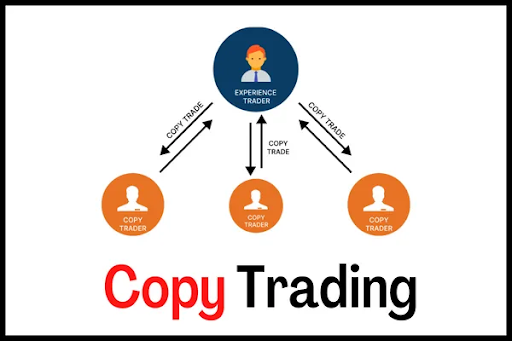
Copy Trading what is it?
Copy trading has revolutionized the way individuals participate in financial markets, making it easier for both beginners and experienced traders to engage in trading activities without deep expertise. This guide explores the fundamental aspects of copy trading, from its mechanism and historical evolution to its benefits, risks, and practical steps for getting started.
What is Copy Trading?
Copy trading is a subset of social trading that allows individuals to replicate the trades of more experienced traders, known as Signal Providers or Master Traders. Instead of directly investing in assets, copy trading enables investors to effectively "invest" in the strategies and expertise of seasoned traders.
Source: www.nigeriabitcoincommunity.com
Participants in Copy Trading
- Signal Providers (Master Traders): These are experienced traders who share their strategies and trades for others to follow. They earn through fees or a percentage of the profits from their copiers.
- Copiers (Followers): Individuals who replicate the trades of Signal Providers, often automating the process to save time and reduce effort.
- Brokers: Platforms like MetaTrader 4 (MT4), eToro, and Zulutrade facilitate the connection between Signal Providers and Copiers.
How Does Copy Trading Work?
The Mechanism
- Platforms and Automation: Copy trading platforms automate the replication process, where trades executed by Signal Providers are mirrored in the Copiers’ accounts.
- Selection: Copiers choose Signal Providers based on their track record, risk tolerance, and trading style.
- Proportional Allocation: Trades are executed in proportion to the funds allocated by the Copier, ensuring scalability for different investment levels.
Practical Example
Imagine a trader unfamiliar with Brazilian economics wishes to gain exposure to the Brazilian real after a domestic market crash. Instead of independently analyzing the market, the trader selects a Signal Provider with expertise in this area, replicating their trades and learning through observation.
Historical Evolution
- 1990s: Copy trading began with newsletters where professional traders shared their strategies.
- 2000s: Platforms like Mirror Trader by Tradency introduced automated trading systems.
- 2010s: Platforms such as eToro popularized fully automated copy trading, increasing accessibility and reliability.
- Post-2008 Regulation: Stricter oversight improved the trustworthiness of copy trading platforms.
Benefits of Copy Trading
1. Accessibility
- Enables beginners with little knowledge to participate in financial markets.
- Automated systems simplify trading for users with limited time.
2. Portfolio Diversification
- Allows exposure to multiple markets, such as forex, stocks, and cryptocurrencies.
- By following multiple Signal Providers, traders can diversify strategies and mitigate risks.
3. Time Efficiency
- Automated replication eliminates the need for constant market monitoring.
- Saves time for individuals with other commitments.
4. Emotional Detachment
- Automation removes emotional biases, leading to more rational trading outcomes.
5. Learning Opportunity
- Copiers can observe strategies and market behavior of experienced traders.
- Helps beginners gradually develop their own trading knowledge.
6. Income for Signal Providers
- Providers can monetize their expertise, earning additional income through fees or profit shares.
Risks and Disadvantages
1. Limited Control
- Copiers surrender decision-making to Signal Providers, losing autonomy over trades.
2. Learning Limitations
- Limited insights into the strategies behind trades reduce the Copier’s learning potential.
3. Market Risks
- Volatility and unpredictable events can lead to significant losses.
- Past performance of Signal Providers does not guarantee future success.
4. Liquidity Risks
- Delays in trade execution or illiquid markets can impact replication accuracy.
5. Costs
- Commissions, fees, and spreads can erode profits.
- Active Signal Providers with frequent trades may increase transaction costs.
Steps to Start Copy Trading
1. Choose a Platform
- Opt for reputable platforms with regulatory oversight (e.g., eToro, MT4, Zulutrade).
- Test the platform using a demo account.
2. Select Signal Providers
- Analyze traders’ performance metrics, including returns, drawdowns, and trading style.
- Diversify by following multiple providers with varying strategies.
3. Allocate Funds
- Start with a small percentage of disposable income.
- Adjust allocations based on performance.
4. Configure Risk Parameters
- Set stop-loss levels and exposure limits to align with your risk tolerance.
5. Monitor and Adjust
- Regularly review the performance of Signal Providers.
- Replace underperforming providers and reallocate funds as needed.
Copy Trading vs. Other Trading Methods
Social Trading
- Involves sharing ideas without automation.
- Requires more effort and knowledge compared to copy trading.
Mirror Trading
- Mimics specific strategies rather than individual traders.
- Less flexible but allows for broader application across asset classes.
Copy Trading
- Fully automates trade replication, offering convenience and ease of use.
Tips for Success
- Diversify
- Follow multiple Signal Providers with varied strategies to spread risk.
- Start Small
- Begin with minimal capital and scale up gradually based on performance.
- Stay Informed
- Monitor market trends and provider performance to make informed decisions.
- Understand Costs
- Be aware of fees, commissions, and spreads to avoid unexpected expenses.
Conclusion
Copy trading is a powerful tool that democratizes access to financial markets, enabling traders of all experience levels to participate with minimal effort. By leveraging the expertise of seasoned professionals, traders can diversify portfolios, save time, and gain valuable market insights. However, the method is not without risks, and success requires careful selection of platforms, providers, and continuous monitoring. When approached thoughtfully, copy trading offers a blend of convenience, learning, and financial opportunity for modern investors.
